Root to the branches to JW.org
- C.Aamold

- Nov 4, 2024
- 17 min read
Updated: Aug 27
NOTE: I do not subscribe to any religion. I once believed in Masoretic Text translations until I dug deeper and came to a different conclusion during my search through Christian denominational teachings, their leaders, and the roots of how they started, while reading the Bible itself verse by verse a few times (many translations) or more to match up their beliefs to the spiritual book they claim to follow and believe in themselves. If you ask me what I believe, I would say what the scholarly census has agreed upon, even if the decision board doesn't agree with them because they're worried about the faith of humanity for what they were taught to believe despite it contradicting evidence. Anything I've studied, watched, read is added here to help you see how I got to this point to help others who are curious too.
Dispensationalism Fad in America Influencing others.
(highlighting what is common JW belief, and collected the weird things that stand out)
Creator, John Nelson Darby 1801-1882 had the same idea that other than the letters from Paul NT wasn’t meant for everyday Christians but to the "kingdom", he has a lot of the same beliefs that JW does
James h brooks 1830-1897 (bible writer and editor of the truth and watchman, leader of the 1875 Niagara bible conference and authored more than 200 booklets and tracts.
Befriended Dwight L Moody and C.I. Scofield in 1800
Cyrus Ingerson Scofield 1843-1921
Known for a bunch of scandals, heavy drinker, abandoned wife and kids.
Christian 1879, mentored by James h Brookes
Became a leader of American dispensationalism
"Rightly dividing the word of truth" 1888
How NT doesn’t apply to anybody, but his Kingdom chosen.
Had his own reference bible in 1909 with his own commentary throughout the whole thing to know how to understand it. Scofield Reference Bible 1909 with no formal bible education just a fan boy of Brooks who was a fan boy of Darby.
The modernist controversy split Christianity (fundamentalist v liberal)
The roaring 20s split American culture (rural v urban)
The scopes monkey trial split American academics (faith v science)
Rise of the "bible school" movement
American seminaries seemed lost in the "treason of the scholars"
Calling scholars the enemy
Bible schools (Moody bible inst.) rose to fill the vacuum
They all relied on Scofield's bible as a staple of Christian instruction
Zionism in Europe and America
Theodor Herzl 1860-1904 galvanized modern Zionism at basil 1897
A.J. Balfour empowered Zionism politically 1917
U.N. sanction of a Jewish state 'vindicated' dispensational views 1948
Lewis Sperry Chafer 1871-1952
Mentored by Scofield
Founded a seminary in Dallas.
Dallas theological seminary
Gave dispensationalism academic respectability
Produced many evangelists on of them being Hal Lindsey who also thought Jesus would be back in 1975 wrote the "late great planet earth", and then influenced to what we have today.
Even earlier history:
The Great Disappointment
The third major post-disappointment Millerite group also claimed, like the Hale- and Turner-led group, that the October 22 date was correct. Rather than Christ having returned invisibly, however, they concluded that the event that took place on October 22, 1844, was quite different. The theology of this third group appears to have had its beginnings as early as October 23, 1844—the day after the Great Disappointment. On that day, during a prayer session with a group of Advent believers, Hiram Edson became convinced that "light would be given" and their "disappointment explained".[23]
Other Adventist bodies emerged in the 19th century. Some, such as the Advent Christian Church and the Life and Advent Union (which merged into the Advent Christian Church in 1964), rejected both the prophetic status of Ellen White and seventh-day worship. Another group, the International Bible Students Association, inspired by Miller and Adventist teachings, was founded by the preacher Charles Taze Russell in 1872. Changing its name to the Jehovah’s Witnesses in the 1930s, it became the second successful group to emerge from the original Millerite movement.
By the time he was 20, Russell had left both Presbyterianism and Congregationalism because he could not reconcile the idea of an eternal hell with God’s mercy. He had drifted into skepticism when a chance encounter with some followers of the Adventist movement begun by William Miller introduced him to the idea that the Bible could be used to predict God’s plan of salvation, especially as the plan related to the end of the world. With the help of tutors, Russell managed to master the use of Hebrew and Greek dictionaries to study the Bible, and he formed his first Bible classes in 1872. With N.H. Barbour of Rochester, N.Y., Russell published Three Worlds and the Harvest of the World in 1877. Basing his judgment on complex biblical calculations, he preached from 1877 that Christ’s “invisible return” had occurred in 1874 and that the end of the Gentile times and the beginning of a golden age would come in 1914, followed by war between capitalism and communism or socialism, after which God’s kingdom by Christ would rule the earth. Russell dedicated his life and his fortune to preaching Christ’s millennial reign. In 1879 he started a Bible journal, later called The Watch Tower, and in 1884 he founded the Watch Tower Bible and Tract Society, which became an extensive publishing business. His own books and booklets (notably seven volumes of Studies in the Scriptures) reached a circulation of 16 million copies in 35 languages, and 2,000 newspapers published his weekly sermons. He was president of the society until his death.
The Man they call king
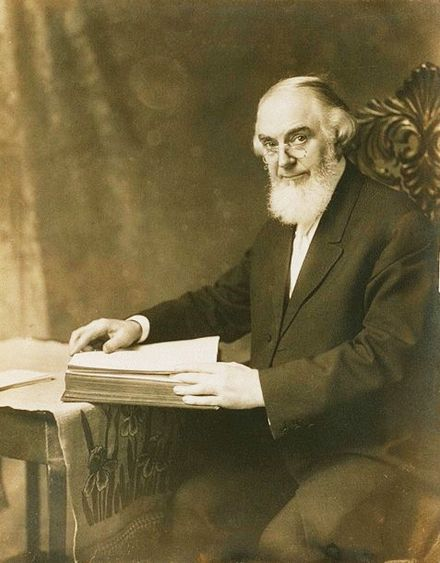
Charles Taze Russell |
|
| |
Born | |
Died | October 31, 1916 (aged 64) Pampa, Texas, US |
Occupations |
|
Pastor Russell, was an American Adventist minister from Pittsburgh, Pennsylvania, and founder of the Bible Student movement.[1][2] He was an early Christian Zionist.[3]
Charles Taze Russell was born to Scotch-Irish parents,[8] immigrant Joseph Lytle/Lytel /ˈlɪtəl/ Russell (1813–1897) and Ann Eliza Birney (1825–1861), on February 16, 1852, in Allegheny, Pennsylvania. Russell was the second of five children, of whom two survived into adulthood. His mother died when he was 9 years old.[9]
The Russells lived for a time in Philadelphia before moving to Pittsburgh, where they became members of the Presbyterian Church. When Charles was in his early teens, his father made him partner of his Pittsburgh haberdashery store. By age twelve, Russell was writing business contracts for customers and given charge of some of his father's other clothing stores.[10] At age thirteen, Russell left the Presbyterian Church to join the Congregational Church. In his youth he was known to chalk Bible verses on fence boards and city sidewalks in an attempt to convert unbelievers; he particularly noted the punishment of hell awaiting the unfaithful.[11]
Charles Taze Russell, a prolific writer and founder of the Bible Student movement, viewed himself as a "mouthpiece" of God and later as the embodiment of the "faithful and wise servant" of the parable of Matthew 24:45-47.[3] The Watch Tower Society is now the legal and administrative arm of Jehovah's Witnesses. Its representatives assert that they have been given insight into the true meaning of the Bible and the unique ability to discern the signs of Christ's second coming.[4]
Haughty spirit
Russell was a charismatic figure, but claimed no special revelation or vision for his teachings and no special authority on his own behalf. He stated that he did not seek to found a new denomination, but intended to gather together those who were seeking the truth of God's Word "during this harvest time".[20][21][22] He wrote that the "clear unfolding of truth" within his teachings was due to "the simple fact that God's due time has come; and if I did not speak, and no other agent could be found, the very stones would cry out."[23]
He viewed himself—and all other Christians anointed with the Holy Spirit—as "God's mouthpiece" and an ambassador of Christ.[23] Later in his career he accepted without protest that many Bible Students viewed him as the "faithful and wise servant" of Matthew 24:45.[24] After his death, the Watch Tower said that he had been made "ruler of all the Lord's goods".[24]
in "beliefs clarified" "congregation organization" jv-205-214
"He was well aware that Christ’s apostles had formed congregations and appointed elders in each. But he believed that Christ was again present, though invisibly so, and was himself personally directing the final harvest of those who would be heirs with him. In view of the circumstances, Brother Russell initially felt that during the time of harvest the arrangement for elders that had existed in the first-century Christian congregations was not needed."
The group, strongly influenced by the writings of Millerite Adventist ministers George Storrs and George Stetson, who were also frequent attendees, concluded that many of the primary doctrines of the established churches, including the Trinity, hellfire, and inherent immortality of the soul, were not substantiated by the scriptures.[25][26][27][28]
Around January 1876, Russell received a copy of Nelson Barbour's Herald of the Morning in the mail. Barbour was an influential Adventist writer and publisher. Russell telegraphed Barbour to set up a meeting. Barbour and John Henry Paton visited in Allegheny in March 1876 at Russell's expense so that he could hear their arguments, and compare the conclusions that each side had made in their studies. Russell sponsored a speech by Barbour in St. George's Hall, Philadelphia in August 1876 and attended other lectures by Barbour.
Among the teachings Barbour introduced was the view that Christians who had died would be raised in April 1878.[29] Russell, who had previously rejected prophetic chronology, was moved to devote his life to what he was convinced were now the last two years before the invisible, spiritual return of Christ. He sold his five clothing stores for approximately $300,000 (current value $8,244,000). With Russell's encouragement and financial backing, Barbour wrote an outline of their views in Three Worlds and the Harvest of This World, published in 1877. A text Russell had previously written, titled The Object and Manner of our Lord's Return, was published concurrently through the offices of the Herald of the Morning.[30] Russell was eager to lead a Christian revival and called two separate meetings of Christian leaders in Pittsburgh. Russell's ideas, particularly stressing the imminence of the rapture and the second advent of Christ, were rejected both times.[31][32]
Confused by what was perceived to be an error in calculation, Russell re-examined the doctrine to see if he could determine whether it had biblical origins or was simply Christian tradition.[citation needed] He concluded that the doctrine was Christian tradition.
In a matter of months, Barbour changed some of the views which he and Russell had previously shared, and no longer relied on prophetic chronology. They began to debate over the issue of 'Christ's ransom', and the two eventually separated because of their disagreements.
He called them "clear unfolding truth" before.
Russell withdrew his financial support and started his own journal, Zion's Watch Tower and Herald of Christ's Presence, publishing his first issue in July 1879. Barbour formed The Church of the Strangers that same year, continuing to publish Herald of the Morning.[34][35][36]
In July 1879, Russell began publishing a monthly religious magazine, Zion's Watch Tower and Herald of Christ's Presence. In 1881, he co-founded Zion's Watch Tower Tract Society with William Henry Conley as president. In 1884 the corporation was registered, with Russell as president. Russell wrote many articles, books, tracts, pamphlets and sermons, totaling approximately 50,000 pages. From 1886 to 1904, he published a six-volume Bible study series titled Millennial Dawn, later renamed Studies in the Scriptures, nearly 20 million copies of which were printed and distributed around the world in several languages during his lifetime.[4] (A seventh volume was commissioned by his successor as society president, Joseph Rutherford, and published in 1917.) The Watch Tower Society ceased publication of Russell's writings in 1927,[5] though his books are still published by several independent groups.
In 1886, after reportedly not making back most of the money spent publishing these three titles, he began publication of what was intended to be a seven-volume series. The volumes were collectively called Millennial Dawn, later renamed Studies in the Scriptures to clarify that they were not novels. Russell published six volumes in the series:[citation needed]
The Plan of the Ages – later renamed The Divine Plan of the Ages (1886)
The Time is at Hand (1889)
Thy Kingdom Come (1891)
The Day of Vengeance – later renamed The Battle of Armageddon (1897)
The At-one-ment Between God and Men (1899)
The New Creation (1904)
Following his examination of the Bible, Russell and other Bible Students came to regard Christian creeds and traditions as harmful errors. They saw their own work as restoring Christianity to the purity of its first century. Many contemporary Church leaders and scholars considered his views heretical. Russell agreed with other Protestants on the primacy of the Bible, and on justification by faith alone, but thought that errors had been introduced in interpretation. Russell agreed with many 19th-century Protestants, including Millerites, in the concept of a Great Apostasy that began in the first century AD. He also agreed with many other contemporary Protestants in belief in the imminent Second Coming of Christ, and in Armageddon.
Russell's scriptural interpretations differed from those of Catholics, and of many Protestants, in the following areas:
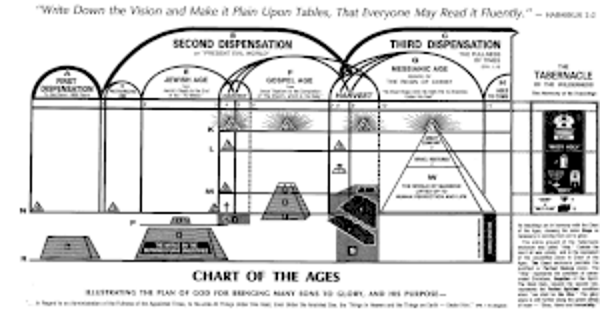
Chart from The Divine Plan of the Ages, (Studies in the Scriptures, Vol 1): The Chart of the Ages[54]
Hell. He said there was a heavenly resurrection of 144,000 righteous, as well as a "great multitude", but believed that the remainder of mankind slept in death, awaiting an earthly resurrection, rather than suffering in a literal Hell.
The Trinity. Russell believed in the divinity of Christ, but differed from orthodoxy by teaching that Jesus had received that divinity as a gift from the Father after dying on the cross. He also taught that the Holy Spirit is not a person, but the manifestation of God's power.
Christ's Second Coming. Russell believed that Christ had returned invisibly in October 1874, and that he had been ruling from heaven since that date. He believed that a "time of trouble" began then that would mark a gradual deterioration of civilized society leading up to the end of the "Gentile Times", with a climactic multi-national attack on a restored Israel, worldwide anarchy, and the sudden destruction of all world governments in October 1914. After the outbreak of World War I in July 1914, Russell reinterpreted 1914 as the beginning of Armageddon.
Pyramidology. Following views first taught by Christian writers such as John Taylor (1781–1864), Charles Piazzi Smyth (1819–1900) and Joseph Seiss (1823–1904), Russell believed that the Great Pyramid of Giza was built by the Hebrews (associating them with the Hyksos) under God's direction, but to be understood only in the modern era. He adopted Seiss' terminology, referring to the pyramid as "the Bible in stone". He held that certain biblical texts, including Isaiah 19:19–20, prophesied a future understanding of the Great Pyramid. He believed that the pyramid's various ascending and descending passages represented biblical concepts such as the fall of man, the provision of the Mosaic Law, the death of Christ and the exultation of the saints in heaven. Calculations were based on the assumption that each inch of the various passages represented one year. Dates such as 1874, 1914, and 1918 purportedly emerged from the study of this monument.[55]
Christian Zionism. Expanding on an idea suggested by Nelson Barbour, Russell taught as early as 1879 that God's favor had been restored to Jews as the result of a prophetic "double" which had ended in 1878 (favor from Jacob to Jesus, then disfavor from Jesus until 1878). In 1910, he conducted a meeting at the New York Hippodrome Theatre, with thousands of Jews attending. His teaching that Jews should not convert to Christianity shocked Jews and Christians alike. Russell believed that the land of Palestine belonged exclusively to the Jewish race, that God was then calling Jews back to their land, and that they would be the center of earthly leadership under God's Kingdom. Early in Russell's ministry, he speculated that the Jews might flock to Palestine and form their own nation by the year 1910. Shortly before his death in 1916, he used the Jewish press to stress that 1914 prophetically marked the time when Gentile nations no longer had earthly authority; he said that all Jews were, from that time onward, permitted and guided by God to gather to Palestine and to reclaim the land boldly for themselves.[56]
Spiritualism and the occult. "Russell attacked Spiritualism (which he called Spiritism)".[57]
In 1910, the secular journal Overland Monthly calculated that by 1909, Russell's writings had become the most widely distributed, privately produced English-language works in the United States. It said that the entire corpus of his works were the third most circulated on earth, after the Bible and the Chinese Almanac.[44] In 1912 The Continent, a Presbyterian journal, stated that in North America Russell's writings had achieved a greater circulation "than the combined circulation of the writings of all the priests and preachers in North America".[45]
Buddy with money
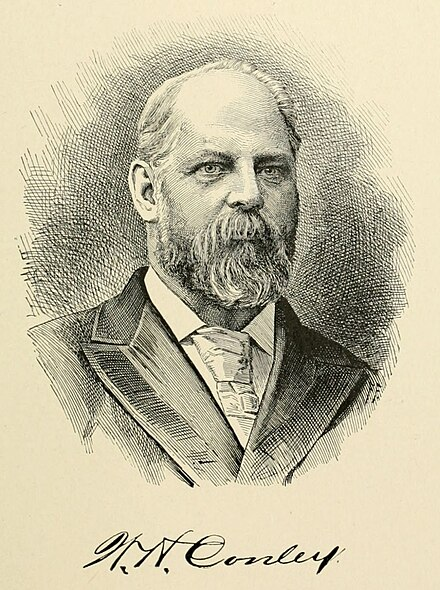
William Henry Conley |
|
|
|
Born | 11 June 1840 |
Died | 25 July 1897 (aged 57) |
Occupation(s) | Industrialist, philanthropist |
Spouse | Sarah Shaffer |
William Conley worked his way from bookkeeper to co-owner of the Riter Conley Company, a worldwide supplier to the drilling, mining, manufacturing, and marine industries.[citation needed] Conley was also director and a stockholder of the Third National Bank of Allegheny.[2]
"old money"
Conley's home mission was described as Bethel (literally, "house of God"). The first recorded mention of Bethel in association with Conley appeared in 1890, in reference to the missionary house of Miss Lucy Dunne, established by William and Sarah Conley in Jerusalem.[8]
Conley was the first president of Zion's Watch Tower Tract Society, from 1881 to 1884. In December 1884, the Society was incorporated with Charles Taze Russell as president.[9] In 1896, the Society was renamed Watch Tower Bible and Tract Society, and later became associated with Jehovah's Witnesses.[10]
In 1894 Russell introduced a letter from Conley by briefly referencing him as "a member of the early Allegheny Bible Class."[13] Following Conley's death in July 1897, Zion's Watch Tower provided no obituary, nor any statement that specifically mentioned his name and his involvement with the Society.
Just give him the money and printing press.
Conley was a member of the board of managers of the non-denominational Christian and Missionary Alliance (CMA), and was instrumental in funding and organizing it at local, state and national levels through the International Missionary Alliance (IMA).[14]
Conley was elected president of both the Pittsburgh branch and at the state level, an office which he retained until his death in 1897.[1]
This guy had his money in the Second Industrial Revolution - Wikipedia and Second Great Awakening - Wikipedia and thrived while helping his buddies.
Russell's side gigs

'Miracle Wheat'
Miracle wheat (Triticum turgidum var. mirabile)
On March 22, 1911, The Brooklyn Daily Eagle reported that Russell was accused of gaining profit from a strain of wheat named "Miracle Wheat" by K.B. Stoner of Fincastle, Virginia, who claimed to have discovered this strain. Russell sold the wheat for $60 per bushel, far above the average cost of wheat at the time. Throughout 1912 and 1913, the Eagle continued to report on Russell's alleged fraud. Russell sued the Eagle for libel, but lost. A government expert investigated the "Miracle Wheat" and said it "was low in the Government tests". Prior to entering the court, the Eagle declared that "at the trial it will show that "Pastor" Russell's religious cult is nothing more than a money-making scheme."[90]
Russell defended himself publicly, and in writing, claiming that the wheat was donated to the Watch Tower Society. He said that although sold for $1 per pound, Mr. Stoner allegedly routinely sold it for a $1.25 per pound. Russell claimed to have no financial connection to the wheat, and said that no one claimed a refund although he had offered one for up to a year later for any who were dissatisfied with their purchase.[91] In 1975, the Watch Tower Society stated that gross receipts from the "Miracle Wheat" fundraiser totaled "about $1800" (current value $57,000), of which "Russell himself did not get a penny". It also said that "the Society itself made no claim for the wheat on its own knowledge and the money received went as a donation into Christian missionary work."[92]
Dead & worshipped
Following Russell's death in 1916, a seventh volume titled The Finished Mystery was published in 1917; this was advertised as his "posthumous work". This seventh volume was a detailed interpretation of the Book of Revelation, but also included interpretations of Ezekiel and the Song of Solomon. Controversy quickly surrounded both its publication and content. It soon became known that much of the contents were written and compiled by two of Russell's associates, Clayton J. Woodworth and George H. Fisher, and edited by Joseph Rutherford, by then the new president of the Watch Tower Society.[47]
He was buried outside of Pittsburgh in United Cemetery, Ross Township, Pennsylvania. The gravesite is marked by a headstone. Nearby stood a 7-foot-tall (2.1 m) pyramid memorial erected by the Watch Tower Bible and Tract Society in 1921.[67][68] The pyramid memorial was vandalized and subsequently removed in September 2021.[58]

A pyramid memorial stood near Russell's gravesite in Pittsburgh, Pennsylvania until its removal in 2021[58]
"God’s book is written for those who are loyal to him,. His
promises are to such. Among these sweet promises are the
words of the Master: “ Be thou faithful unto death, and I will
give thee the crown of life.” “ These shall be kings and
priests unto God and unto Christ and shall reign with him.”
Long ago God caused the Sweet Singer to record in his holy
Book, concerning the faithful and loyal followers of Christ
Jesus, these sweet words:
“ The king shall joy in thy strength, 0 Lord: and in thy
salvation how greatly shall he Rejoice. Thou hast given
him his heart’s desire, and hast not withholden the re
quest of his lips. Selah. For thou preventest him with
the blessings of goodness; thou settest a crown of pure
gold on his head. He asked life of thee, and thou gavest
it him, even length of days forever and ever. His glory is
great in thy salvation; 'honour and majesty hast thou
laid upon him, for thou hast made him most blessed for
ever; thou hast made him exceeding glad with thy coun
tenance.”-—Psalm 21:1-6.
Truly these words fittingly apply to our beloved Brother and
Pastor!
Charles Taze Russell, thou hast, by the Lord, been crowned
a king; and through the everlasting ages thy name shall be
known amongst the people, and thy enemies shall come and
worship at thy feet.
We take the last view of this piece of clay that so faith
fully bore the banner of the King. He has been a true, loyal,
faithful ambassador of Christ. Thanks be to God, he has en-
tered into his everlasting reward. The greatest desire of our
lives is that we, together with him, may soon be forever with
the Lord and participate in blessing all the families of the
earth. God help us, as we here renew our consecration, to
keep it faithfully to the end."
pg.25665
They worshipped a man.
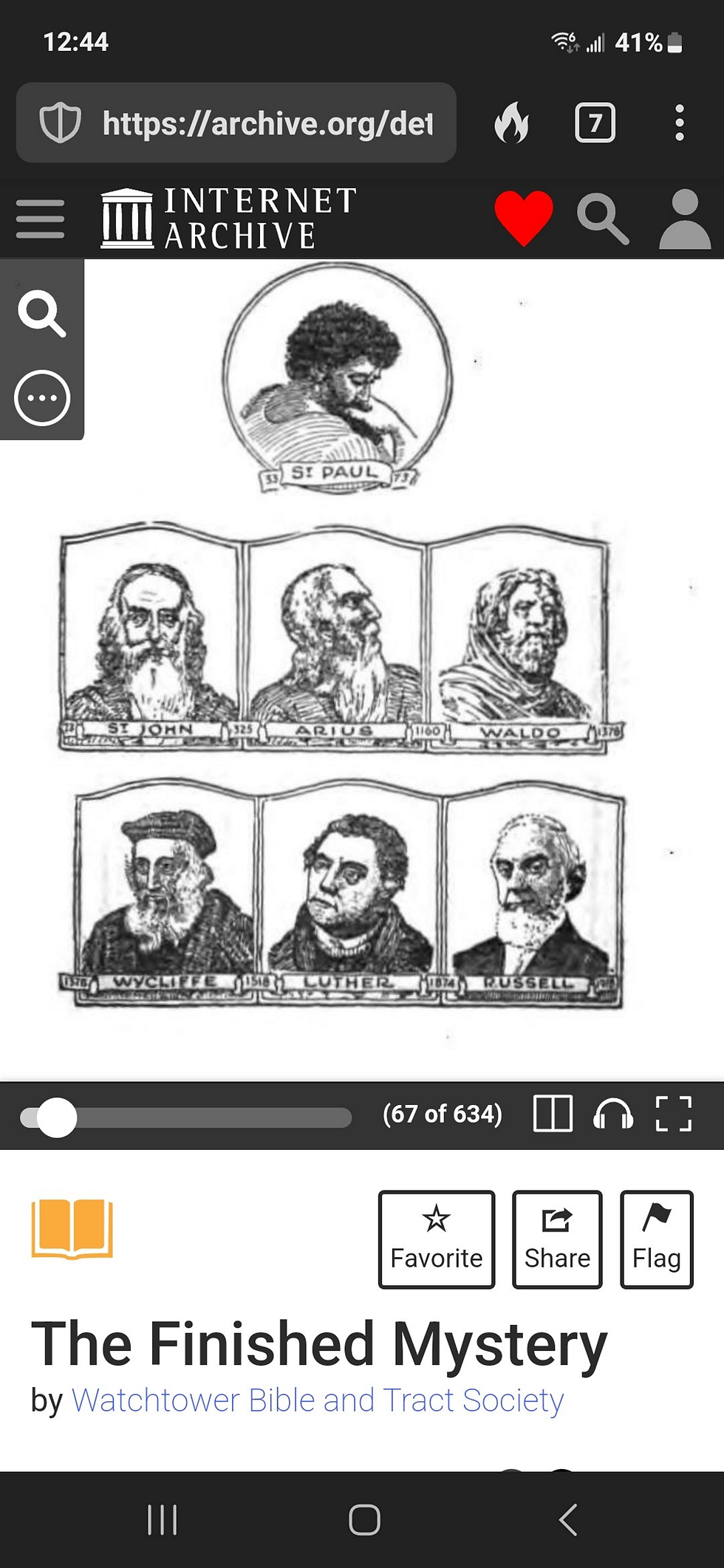
Pg. 67
Other pages in the book

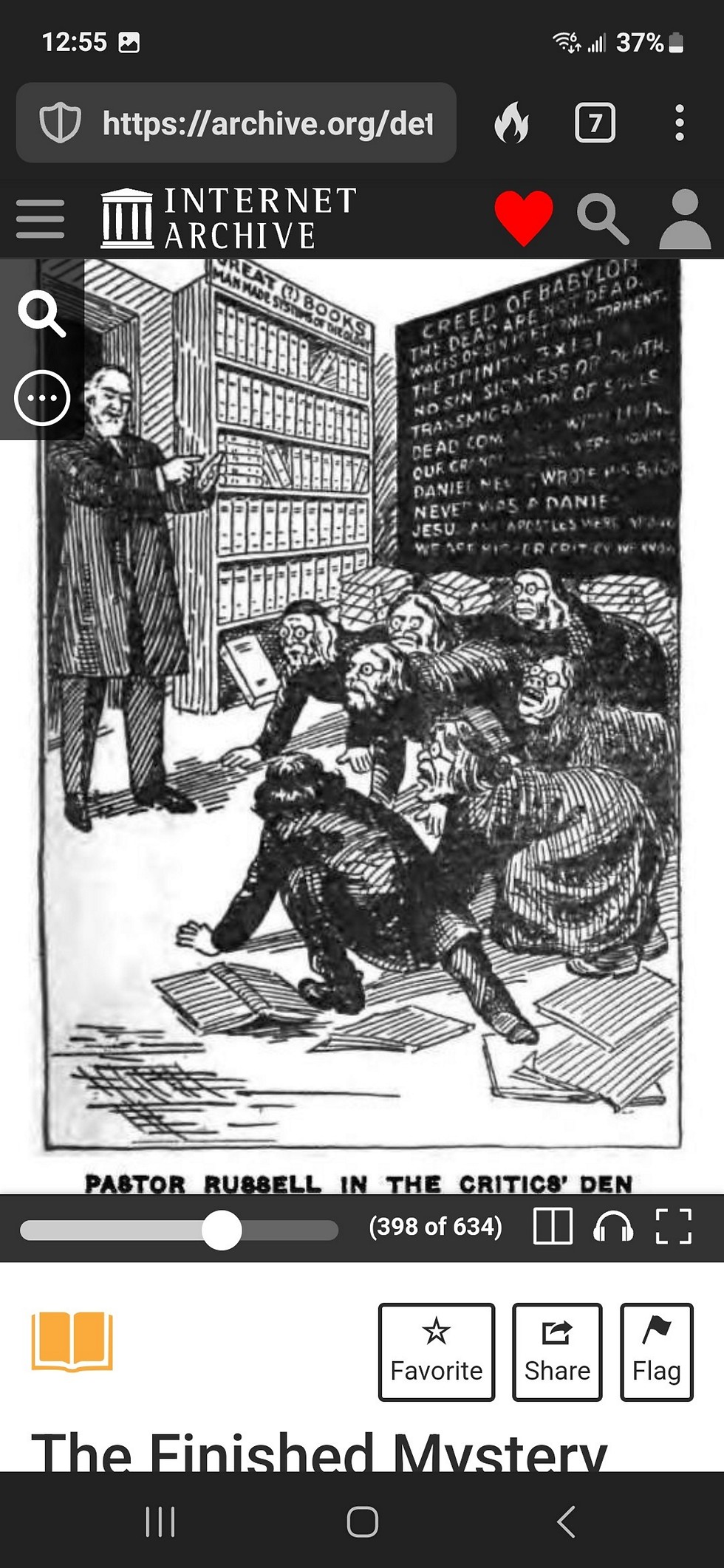
Worship stance?

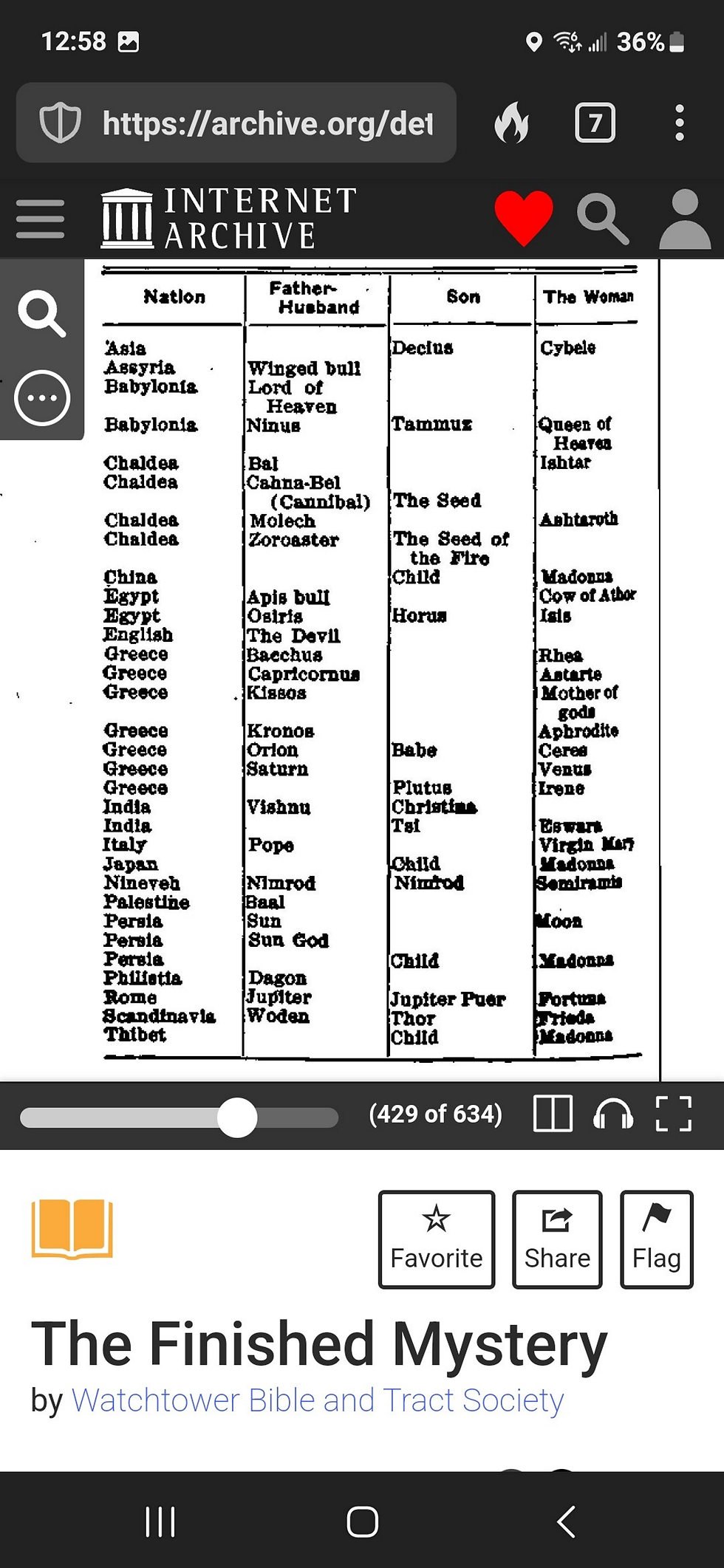
One thing he had right? -ish?
Selling God
Until March 1990, The Watchtower was available for a small charge that varied over time and in different countries. For example, in the United States, the suggested donation per issue was $0.05 in 1950,[28] gradually increasing to $0.25 in 1989.[29] On January 17, 1990, the Supreme Court of the United States ruled against Jimmy Swaggart that sales of religious literature were subject to taxation,[30] which introduced ambiguity into the formerly tax-free practice of suggesting a specific amount in exchange for the magazines. The Watch Tower Society supported Swaggart in the case, arguing that the perceived sale of religious literature should be exempt from taxation.[31]
From March 1, 1990, the magazines were made available at no cost, on a freewill donation basis in the United States, with the stated purpose of simplifying their Bible educational work and distinguishing themselves from those who commercialize religion.[32] An article in the May 1990 issue of Our Kingdom Ministry—a newsletter provided to members—stated that "there are growing pressures against all religious elements" and went on to say that their main concern was to move ahead in the worldwide preaching work, "without hindrance."[32]
The sale of Jehovah's Witnesses' literature was gradually phased out in other countries, and The Watchtower has been distributed free of charge worldwide since January 2000, its printing being funded by voluntary donations from Jehovah's Witnesses and members of the public.[33]








Comments